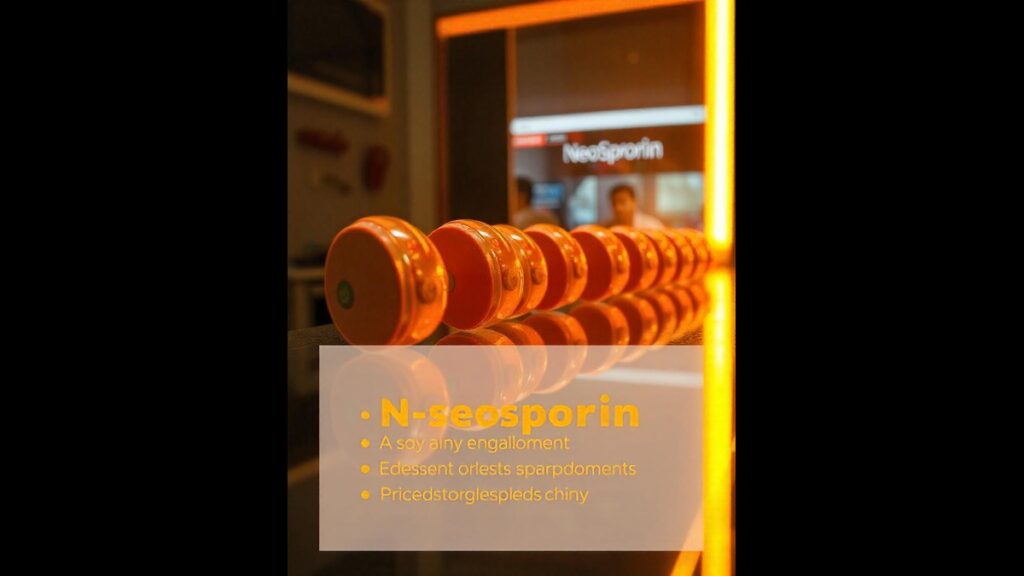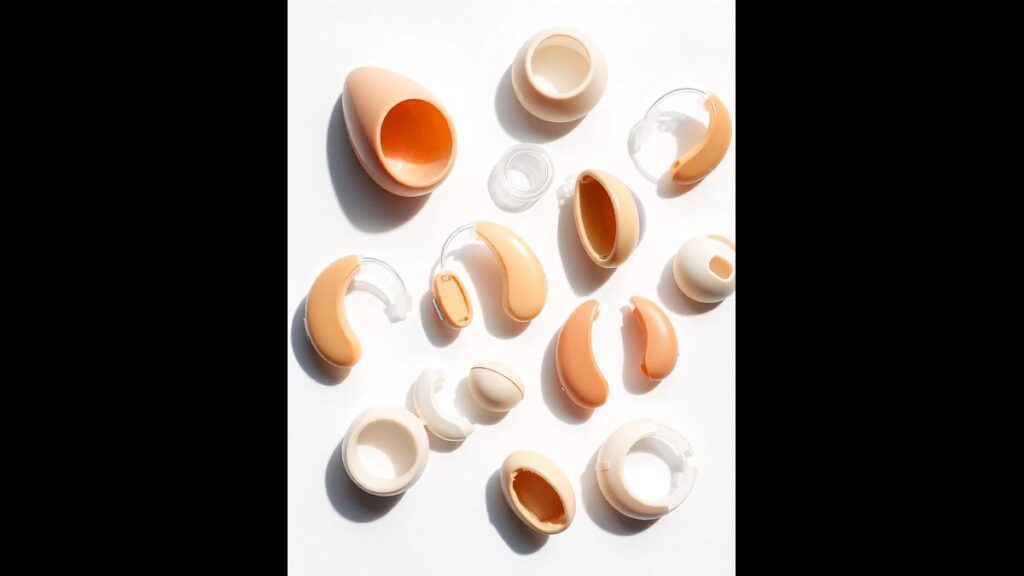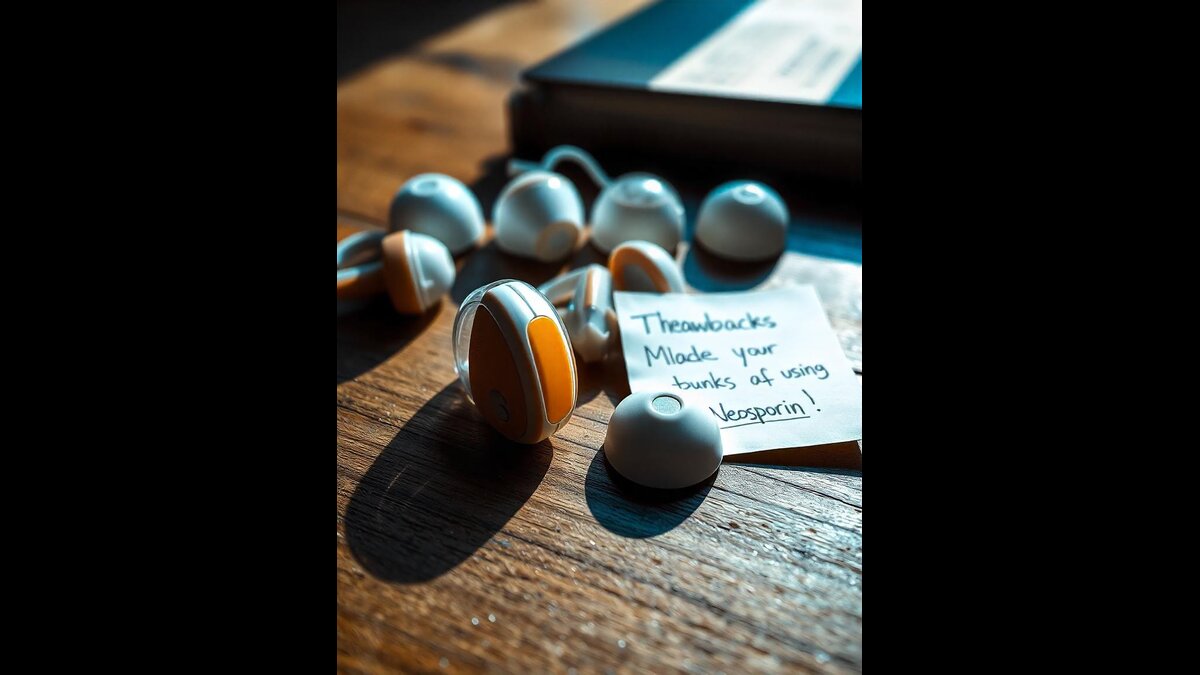Introduction
What Are Hearing Aid Domes?
A hearing aid dome is a small, flexible cover that fits over the tip of your hearing aid. It acts as a partner between the hearing aid user and the ear canal. It helps in transmitting sound from the hearing aid to the ear. Domes come in a variety of sizes and materials to ensure the best fit and comfort for each user. It plays an important role in the performance of hearing aids. This is because the properly fitted dome directs the sound and prevents feedback. As well as guaranteeing comfort during long periods of use.
Neosporin: What Is It and How Is It Used?
Neosporin is an over-the-counter antibiotic ointment that contains neomycin, bacitracin, and polymyxin B. It’s often used to prevent infection and treat minor cuts, scrapes, and burns. Many people use Neosporin for quick relief from skin rashes or the infection inside the ear but it is not suitable for use inside the ear or with hearing aid domes.
Why Neosporin Is Not Recommended for Hearing Aid Domes
Neosporin is effective in treating skin wounds and abrasions, But Neosporin is not designed for use with ear tubes or with hearing aids. The oily, thick Neosporin can leave residue in the ear dome. This may affect sound transmission and can cause additional problems, such as blockage of the ear canal or hearing damage. Neosporin also traps moisture in the ear which causes bacteria or fungus to grow or an allergic reaction may occur. For these reasons, the use of Neosporin in the hearing aid dome should be avoided.

Functions and Importance of Hearing Aid Domes
How Hearing Aid Domes Work with Hearing Aids
The hearing aid domes acts as a bridge between the hearing aid and the ear canal. It helps transmit sound from the hearing aid directly to the ear and amplifies external sounds for the hearing impaired the size and fit of the dome are important to ensure effective sound transmission. It also reduces the reactions (whistles, humming) that can occur if the dome isn’t positioned properly.
The Role of Domes in Comfort and Sound Quality
Comfort and sound quality are closely related to the selection and fit of the hearing aid dome. A good dome prevents irritation and discomfort during long periods of use. If the dome is too tight or too loose it can cause pain or affect the functioning of your hearing aid. A well-equipped dome produces clear sound and reduces the risk of irritation or pressure on the ear canal. Comfort also plays a role in ensuring the wearer can use their hearing aids regularly.
Types of Hearing Aid Domes
Open Domes
The open dome is lightweight and allows more ambient sound to enter the ear. While still amplifying the signs of hearing loss it is generally used for people with mild to moderate hearing loss, because they allow the ear canal to “breathe” and reduce the “plugged” feeling, open domes are ideal for people who still want to hear environmental sounds (such as conversations, background noise)
Closed Domes
The closed dome is designed to seal the ear canal more tightly. They are often used by individuals with moderate to severe hearing loss. Because it provides stronger sound amplification closed domes can create a more isolated sound experience and it feels less natural for some users.
Power Domes
The power dome is larger and more rigid it allows a higher amplification level for people with severe hearing loss. These domes are more restrictive but it is essential for those who require significant sound amplification.
Soft vs. Firm Domes
The soft dome is made from a flexible material that is equal to the shape of the ear. This makes it comfortable to wear for many users. They are commonly used by those who want a balance between comfort and sound isolation on the other hand; a Firm dome provides a more secure fit and a stronger seal. This may be necessary for individuals who require additional amplification.
Choosing the Right Dome
Factors to Consider When Selecting a Dome
When selecting a hearing aid dome, factors such as the severity of hearing loss, ear shape, and the comfort of the fit should be taken into account. Those with more severe hearing loss might need power or closed domes, while those with milder loss may benefit from open domes. Comfort is a primary concern, as well, as an uncomfortable dome can discourage consistent use.
When choosing a hearing aid dome factors such as the severity of the hearing loss, ear size, and comfort should be considered. People with severe hearing loss may require electric or closed domes. While those who have milder hearing loss may benefit from an open dome. Comfort is also a top priority because uncomfortable can discourage continued use.

The Importance of Professional Advice
Selecting the right dome for your hearing aid should be guided by an audiologist. An audiologist can assess your specific hearing needs, ear canal size, and any sensitivity to ensure that you get the best and most effective fit. Regular check-ups also ensure that your hearing aid settings continue to meet your needs over time.
Proper Care and Maintenance for Hearing Aid Domes
Regular Cleaning and Hygiene Practices
Regular cleaning is important to ensure the longevity of your hearing aid domes and maintain the health of your ears. The dome can be wiped daily with a soft, clean cloth, and washed weekly with mild soap and warm water to remove any earwax or debris. Proper cleaning prevents the build-up of harmful bacteria or fungal infections that can cause ear irritation.
Replacing Domes Periodically
Hearing aid domes should be replaced every few months or when they show signs of wear, such as cracks or loss of elasticity. Regular replacement will help maintain a safe seal and the best sound quality. It also prevents the build-up of earwax or bacteria that may develop over time.
Moisture Control and Preventing Blockage
Moisture from sweat, humidity, or earwax can reduce the effectiveness of your hearing aid dome. Using moisture-absorbing products such as drying kits or drying equipment helps keep domes and hearing aids dry. It also prevents the growth of bacteria and fungi that flourish in humid environments.
Risks of Using Neosporin in Hearing Aid Domes
Device Damage
Neosporin can leave a sticky residue inside the dome. This may interfere with the sound transmission of the hearing aid and cause damage to the sensitive components of the equipment.
Ear Canal Blockage
The oily consistency of Neosporin can clog the ear canal cause discomfort, decreased performance of hearing aids and there is a high risk of ear infections.
Allergic Reactions and Irritation
Some individuals may be allergic to Neosporin or sensitive to ingredients in the ointment coating. This can cause redness, itching, or inflammation in the ear canal. This irritation can become worse with prolonged contact.
Moisture Buildup and Infection Risks
Neosporin can trap moisture in the ear which can create a favorable environment for bacterial or fungal infections. This is especially concerning when the ear canal is covered by the hearing aid dome.
Alternatives to Neosporin for Ear Care
Antibacterial Ear Drops
If infection or irritation occurs it is best to use ear drops designed specifically for ear health. This product is safe for use in the ear canal and does not damage the hearing aid.
Ear Cleaning Solutions
Special ear cleaner cleans wax or excess debris from the ear canal without irritating or damaging your hearing aid.
Moisture Control Products
To combat moisture buildup, use hearing aid dehumidifiers or moisture-control products, which keep both the ear canal and hearing aid dry and free from bacteria.
Adjusting Hearing Aid Domes for Comfort
If you feel discomfort, adjusting the size or type of hearing aid dome can provide relief. An audiologist can help find the best solution based on the user’s specific ear shape and hearing needs.

Conclusion
Hearing aid domes play an important role in ensuring sound quality and comfort for people using hearing aids. Selection, maintenance and taking proper care of your dome can improve your hearing experience. This makes it a good idea to avoid inappropriate products such as Neosporin. Although Neosporin is effective in treating minor skin cuts, when used with a hearing aid dome it can cause moisture to build up in the ear canal. Blockages and even infections Select a product and consult an audiologist to ensure your dome is properly installed.
Frequently Asked Questions
Can I use Neosporin in my hearing aid domes?
No, it is not recommended to use Neosporin with your hearing aid dome. Neosporin can leave an oily residue that may interfere with sound transmission can cause blockage in the ear canal and promotes the growth of bacteria or fungi. Instead, use ear-safe products, such as antibacterial ear drops or moisture-regulating solutions.
How to avoid itching when wearing my hearing aid domes?
Itching can be caused by irritation or an improper dome. Make sure your hearing aid dome is the correct size and material for your ear. If itching still occurs try using a hypoallergenic dome or consult an audiologist for adjustments. Cleaning your hearing aids regularly can help prevent irritation.
Are hearing aid domes interchangeable?
Hearing aid domes are not universally interchangeable. The correct dome depends on the hearing aid model, ear size, and severity of hearing loss. Consultation with an audiologist is essential in choosing the right dome for maximum comfort and sound quality.
How should hearing aid domes fit?
The hearing aid dome fits snugly without discomforting the ear canal and blocking airflow. The fit should prevent backlash (whistling) when outside sounds can pass through. Especially with open domes or soft domes. The precise fit ensures comfort and effective sound amplification.
How to clean hearing aid domes?
Gently wipe the hearing aid dome daily with a soft, dry cloth to clean it wash once a week with mild soap and warm water to remove any residue or earwax. Dry them thoroughly before putting them back on your hearing aids to prevent moisture buildup.
